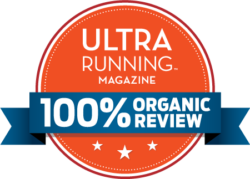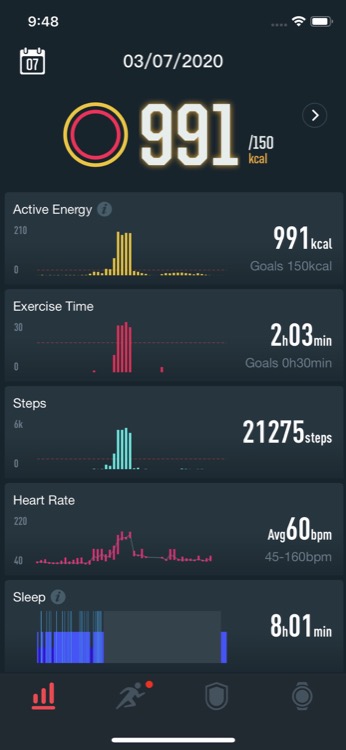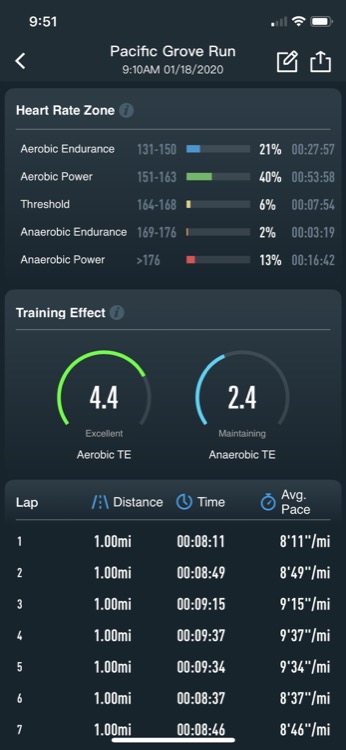 Our reviews are 100% organic. We do not accept payment for reviews or bundle with advertising budgets. In most cases, the brand is providing the product to our reviewers free of charge.
Our reviews are 100% organic. We do not accept payment for reviews or bundle with advertising budgets. In most cases, the brand is providing the product to our reviewers free of charge. By Melissa Gunner
The original COROS APEX distinguished itself by combining best-in-category battery life with an essential feature set and a basic app interface. It offers extensive “bang for your buck” for cost-conscious ultrarunners who rely on critical data but don’t want to get bogged down in analysis overload. Two other distinctive elements are the rotating bezel that control most operations of the watch, and a completely app-driven platform for customization. The APEX Pro is the next-level multisport watch from COROS with more data elements at your disposal, a longer battery life and touchscreen capacity in addition to the bezel operation. It also comes with a higher price point that’s close to premium devices from Garmin and Suunto, so the performance expectation is higher as well.
The hardware of the COROS APEX Pro watch is a little different from other watches on the market, primarily due to the rotating bezel in addition to the light and back/Lap buttons. The bezel took some getting used to, but the touch screen technology allows you to easily scroll without it. We found the watch to be a little counterintuitive at first, but there are extensive videos on the website and mobile app to help understand the basics and teach users how to best utilize its features. As mentioned, nearly everything on the watch is controlled via the COROS mobile app, which initially took some getting used to but is quite user friendly.
The APEX Pro offers a lot of customized settings, including multiple display screens that you can vary for each type of workout. You can select up to five customized screens per workout type, with each screen containing up to six different metrics. Customized screens must be done in the COROS app before a workout starts and cannot be changed from the watch itself – this is a point of distinction from Garmin watches, which can be customized during an activity. The touch screen allows users to easily scroll and view different metrics. The rotating bezel is rather sensitive and was pressed accidentally during some workouts which paused the recording of the activity. This can be resolved by changing the settings to lock, but then a full rotation of the bezel is required to unlock the watch should you need to pause it during a workout, which can be cumbersome if you are wearing gloves.
COROS has updated its software since the release of the APEX to offer a much wider array of options for tracking various workout types. There are several running options – run, indoor run, trail run, track run – and the watch also includes various types of swimming and biking as well as less conventional activity types like mountain climbing, skiing and snowboarding. While this is a robust list, you do have to scroll through it each time you are looking for the activity type you want, as there is currently no way to delete certain activities you won’t ever use. We tested the ski, bike and pool swim options and were impressed with all of them, but we will focus mainly on the running options for this review.
All four running modes offer a metronome setting, which is helpful for trying to maintain a specific cadence to help with pacing. The metronome can be set in increments of 10 from 120-240 beats per minute, and beeps loud enough to hear easily when you are running in most places. The trail run setting offers 3D distance calculation to help calibrate distance while factoring in elevation gain. GPS data points provide adequate distance measurement when speed and elevation change are relatively steady. When running at higher speeds and predominantly downhill, 3D distance calculation provides a more accurate picture of the distance run. Climbing measurements seemed fairly accurate when actually running, but the elevation measurement during rest seemed to vary quite a bit (one tester who lives at about 100 ft sea level said the watch varied from 90-240 feet when she wore it at home). For ultrarunners who are really particular about vertical gain, this static inconsistency could be frustrating.
The run and track run settings both offer interval training which consists of a warmup, intervals and rest periods as desired, and cool down. Though it takes a little effort to set up your interval workout ahead of time, the watch does all the tracking management on its own and beeps to alert you when you are approaching the pre-set distance or time. This proved to be an exciting tool during track workouts for speed, as we could focus more on our training rather than messing with our watch to ensure the activity was tracked properly. Unfortunately, the watch doesn’t have a way to customize interval workouts to vary the run or rest, so you can only do the same set time or distance throughout the entirety. The track run setting also allows you to select which lane you are in and monitors this with impressive accuracy – it detected when one tester had veered into lane 2 to cool down and instructed him to go back to lane 1 to maintain a proper distance measurement. We tried running around the track with the normal run setting, and it didn’t seem to track as accurately as the actual track setting did, so there does seem to be a noticeable distinction in tracking between modes.
After an activity is completed, it can be easily uploaded to the COROS app to view an overall summary including not only pace and distance, but breakdown of stride length, cadence and heart rate. The app also shows how many minutes were spent in aerobic endurance, aerobic power, threshold, anaerobic endurance or anaerobic power, and gives an overall training effect score to show how effectively the training improved your fitness level. You can also use the COROS AI Trainer to set an aerobic or anaerobic target for a workout, and it will cue you during your activity to help you reach your goal.
Perhaps the biggest selling point for the COROS APEX Pro is battery life. According to COROS, the APEX Pro boasts 40 hours of battery life in regular GPS mode – a five-hour increase over the regular APEX – and up to 100 hours in UltraMax mode, ranking it above most similarly priced watches on the market. The APEX Pro’s battery life certainly proved itself, as we were able to track two weeks of workouts (about 35 hours of training) in normal GPS mode without ever charging the watch, and probably could have squeezed in another workout or two with the 10% battery left.
In addition to longer battery life, the COROS APEX Pro also comes with a breadcrumb navigation feature with touch screen technology that we tested on a variety of runs. You can upload a GPX file from the COROS app or Strava, sync it to the watch, and then view the route and elevation profile as well as zoom in and out on the route map. Once running, the GPS signal gently reminds you if you have gone off course by buzzing and offering you directions back to the loaded route. This worked well in both open areas such as a recreational bike path, as well as forested terrain with single-track trails.
A new feature that distinguishes the APEX Pro from the APEX is its built-in pulse oximeter and Altitude Advisory. The pulse oximeter works to get an accurate blood oxygen reading at rest but is unable to measure this during movement (this is a similar limitation with other watches offering pulse ox capability). This means that you must rest on the side of the trail for a few minutes to get a reading, and it may not accurately account for the drop in blood oxygen content when you are in the process of climbing up a mountain. You can use Altitude Performance measuring starting at 8,250 ft, and based on hourly acclimatization values, the watch will advise you whether you should continue climbing or turn around. If you make multiple forays into high altitude, the watch provides acclimatization evaluations to indicate how well your body is adapting.
At a price point of $499, the APEX Pro is $150 more than the APEX 46mm model. While the added feature of the Altitude Advisory is a bonus, it is really only a benefit if you live or train in high altitude areas. The touchscreen technology may be worth the price increase for users who are comfortable with this interface or want to circumnavigate using the rotating bezel during workouts. The extensive battery life was already a selling point on the APEX, and the additional five hours makes the APEX Pro completely adequate for most mountain 100-milers on a single charge, which is rather remarkable.
Basic summary: The COROS APEX Pro is an upgrade from the APEX, with an even longer battery life and a more robust set of features. Key additions include a built-in pulse oximeter for monitoring oxygen saturation, Altitude Advisory which gives feedback on your acclimation to high altitude based on blood oxygen monitoring, and touch screen technology for easily swapping between screens or zooming in/out for navigation.
General Specs
- Physical Size: 47 x 47 x 13.4 mm
- Weight: 59 g
- Sapphire glass/titanium alloy/aluminum materials
- Navigation: GPS / GLONASS
- Sensors: optical pulse oximeter, wrist-based heart rate, barometric altimeter, accelerometer, compass, gyroscope, thermometer
- Charging time: Less than 2 hours
- Battery life: 30 days regular use, 40 hours full GPS mode, 100 hours UltraMax mode
Activity tracking features:
- Continuous HR
- Cadence/stride
- Sleep tracking and metrics
- Calories and steps
- Daily, weekly, monthly summaries available for tracking metrics
Running features:
- Speed, pace, distance
- Route navigation
- Compass
- Wrist-based optical HR
- Training effort based on aerobic and anaerobic thresholds
- Activity-based recovery time
- Training analysis over time including VO2 max and lactate threshold












4 comments
Love all the detailed features that are so well described here- even the extended battery life!
I have had this watch for about 6 months and have loved everything about it – it rocks!
Thanks for the review. Can’t get any information on how the Apex Pro compares to Garmin or Polar in terms of Sleep Analysis, Training load/level analysis, Training advises and Recovery analysis/advise – all that smart stuff that is also important.
All the features you have mentioned are pretty obvious from the specs. I can see that it is a very well built, nice, comfortable watch with tons of battery. But it is hard to get the intellectual part of it.
It’s an absolutely remarkable watch. I just switched from my Suunto Spartan to the Apex Pro a few months back and have been looking into finding just one thing wrong with this watch. I’m still looking…
A few of my favorite things is the insane battery life, the swivel dial which is way easier than a button, and how sleek the design is. Oh and it uploads to my Strava within a minute post run if I’m near my phone!
Comments are closed.